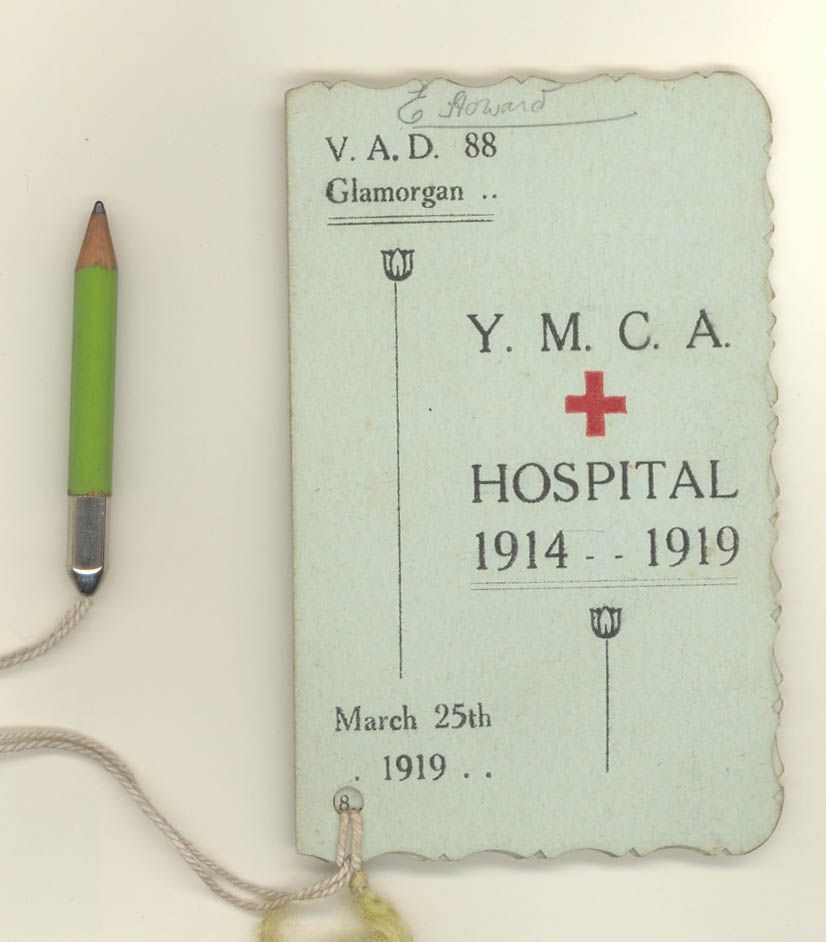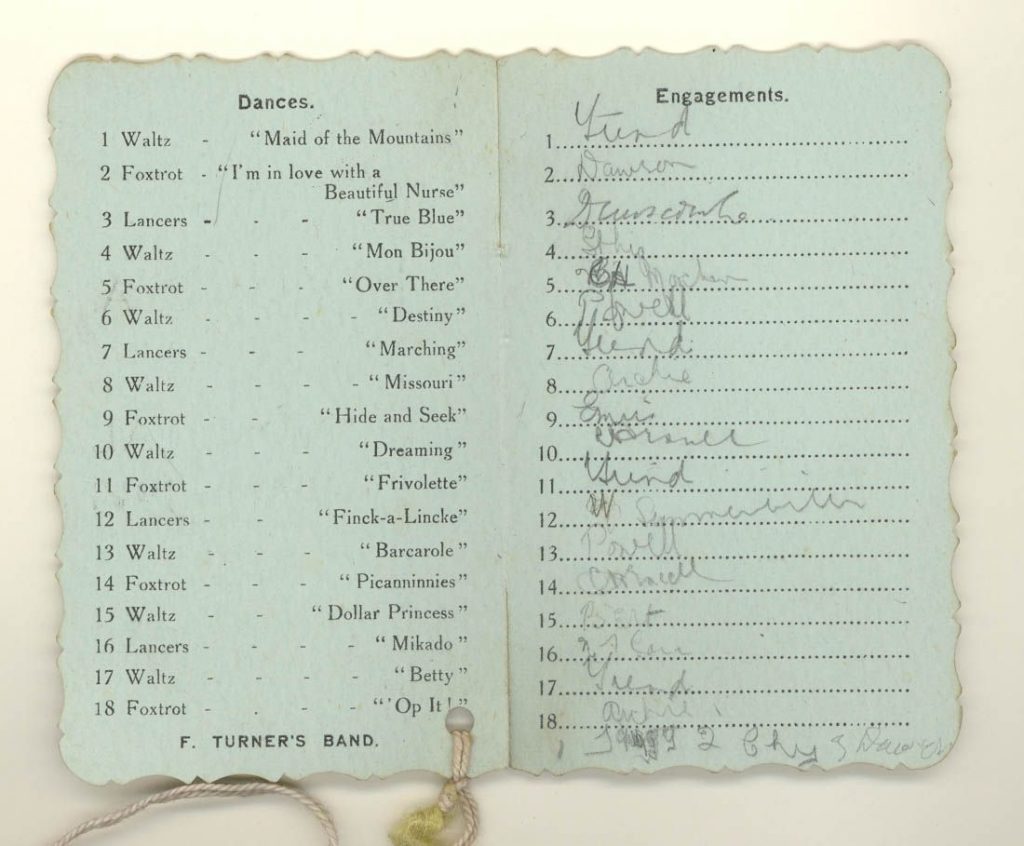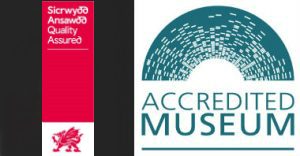Swansea Museum Collection

Dance card, ink on card. Dance card for the V.A.D. 88 Glamorgan dance at the YMCA hospital on March the 25th, 1919. Inside has a list of songs and dances and a list for where gentlemen can write their names to claim Ethel Howard for a dance. There is a pale blue string attached to the bottom of the card with a miniature green pencil on the end. The string would have also allowed the card to hang from the lady’s wrist while she danced. Decorative edge to the card.
Swansea Museum Collection contains several dance cards. This example SM 1985.157.21, is for a dance held on the 25th March 1919, at the YMCA Red Cross Hospital, Voluntary Aid Detachment No 88 Glamorgan. The dance was held just a week before the building was handed back to the YMCA.
The YMCA new building on the Kingsway had only just opened in October 1913 and within a year the Red Cross were taking it over for use as a hospital. As casualties mounted they eventually took over the entire building and the YMCA moved to St Andrews on St Helen’s Road, now Swansea Mosque.
Dance cards would soon go out of fashion but in essence it was a list of the different dances tunes that would be played that evening with a pencil attached. Gentlemen could then approach the lady, request a particular dance and the woman would be able to remember by writing his name alongside the dance requested.
Dance cards originated in the 18th century and become widespread in the 19th century after they become fashionable in Vienna. Soon after this particular example, they pretty much were consigned to history. By WW2 the United States Army Air Force had taken the term dance card and instead applied it to a written card detailing their bombing mission plans.
The dance took place at the YMCA Hospital in March 1919 and Miss Howard was popular. The dance list inside is full.
The tragedy of the Great War had resulted in changes to society in the 1920s with people more keen to live life. Fashion changed and new dances like the Charleston become popular. Swansea YMCA where the dance was held in 1919 but under the auspices of the Red Cross found itself trying to adapt to this new world but not without a struggle. A year later the Ladies Auxiliary were looking to organise social events and dancing as part of their funding efforts for the YMCA.

The Executive Committee minutes (YMCA Board of Management) dated 18th October 1920 gives a fascinating insight to that struggle. The Ladies Auxiliary for the YMCA (support group primarily raising funds for the charity) had requested permission to hold social evenings during the winter in order to raise funds. The minutes are handwritten but obviously this caused quite a debate at the meeting and the minute taker obviously gave up and typed up the section later and glued in the final agreed position. The minute is worth repeating in full:
“That the request of the Ladies Auxiliary for permission to hold social evenings during the winter be cordially acceded to on the following conditions:
- That the closing time be no later than 10.30pm.
- That no card playing be permitted.
- That with regard to the question of dancing, this executive realises that the war service of the YMCA has opened out new and wider avenues of social service, and is desirous of meeting all legitimate and reasonable demands for recreation and amusement on the part of its members, but is bound at this juncture to reserve its judgement as to the desirability of allowing dances on the premises.
- The executive committee is prepared however as an experiment for its future guidance to sanction with the above request, on the understanding that if dancing takes place, it shall be of an informal character and not be advertised and made a special feature of the gatherings, and further the executive looks with confidence to the Ladies Auxiliary to exercise such supervision in the conduct of these social parties as shall preclude anything arising which shall in any way reflect upon or be detrimental to the spiritual work of the association. Such work being its chief aim and purpose”.
So dances were permitted on the understanding that they would not be advertised as dances. A very British compromise indeed.
However when you read the minutes through the 1920s and 1930s the issue continues to be an area of controversy, which arose a number of times.
Another area of controversy would be whist drives, which would also eventually become a means of fundraising for the organisation.

